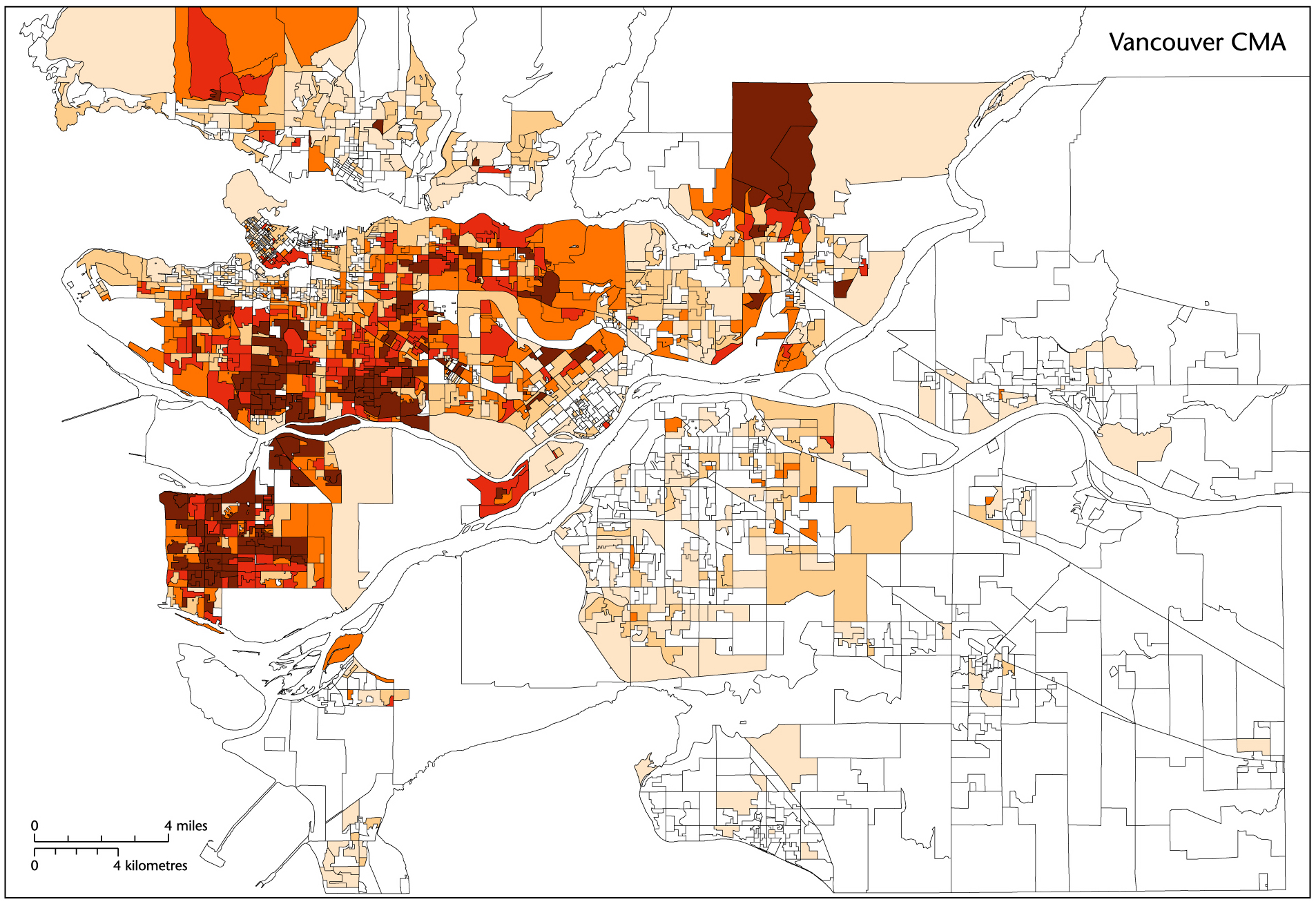I have become interested in how local governments in the Vancouver region have taken responsibility for including non-mainstream populations in the preparation and amendment of local plans as well as local social services. This project examines the changing composition of Vancouver’s neighbourhoods and the roles that these play in the mutual adjustment processes of immigrants. Themes include newcomer residential concentration and the role of multicultural planning in addressing neighbourhood-scale conflict. Earlier studies, together with colleague Tom Hutton (SCARP, UBC) and Michael Goldberg (Sauder Business School, UBC) provided a base-line survey of services provided to non-English speaking populations by the 21 local governments that make up the Greater Vancouver Regional District (now called Metro Vancouver), and examined the importance of migration from Hong Kong in shaping Vancouver’s suburban areas. Recent research, funded by RIIM (Research into Immigration and Integration in the Metropolis – now called Metropolis British Columbia) focuses on examining the planning procedures taken by the City of Richmond BC when faced with local opposition by the resident Chinese community to the opening of a ` group home’ in 2002. The hypothesis is that local governments are able to take leadership in mediating between various local communities in land use planning decisions. Indeed, I argue that the City of Richmond took sensitive and appropriate action to diffuse the original conflict over the siting of a Group Home in a local residential area.
Research Reports:
D.W. Edgington, M.A. Goldberg, and T.A. Hutton (2006) “Hong Kong Business, Money and Migration in Vancouver,” in W. Li (ed.) The New Asian Immigrant Community: from Urban Enclave to Ethnic Suburb, Hawaii, University of Hawaii Press, 155-183
Conference Presentation:
D.W. Edgington (2006) “Group Homes in Richmond, BC”, paper presented at the 8th National Metropolis Conference, Vancouver, March.
